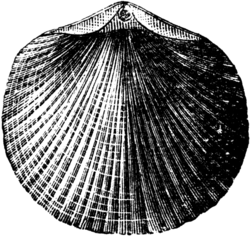Description

The name for the formation originates from the description of strata near the "south cape of Thunder Bay" by C. C. Douglas in 1841, this area also represents the type locality of the formation. Due to negligence by multiple later workers, the area was later referred to as the Partridge Point Formation by Warthin & Cooper in 1935. It wasn't until 1943 that Warthin & Cooper would rename the formation back to its original name. [2]
The type locality (Locality 30-8-11 SE) is the largest outcrop of the formation, exposing six units that have a total depth of about 4.8 meters. These units are largely made from light-colored limestones though the bottom-most unit has bluish limestone. The most unique unit would be unit 3 which mostly is made up of grey shales that grades into granular limestone at the surface.
The environment that the formation represents is a shallow carbonate platform with large amounts of coral and shelly fauna. Later formations show an increase in depth as water levels raised in the Eastern Interior seaway. Over time, the seaway would develop a stratified water column. Eventually, younger formations, like the Squaw Bay limestone, would show a deep basin environment. [3]































